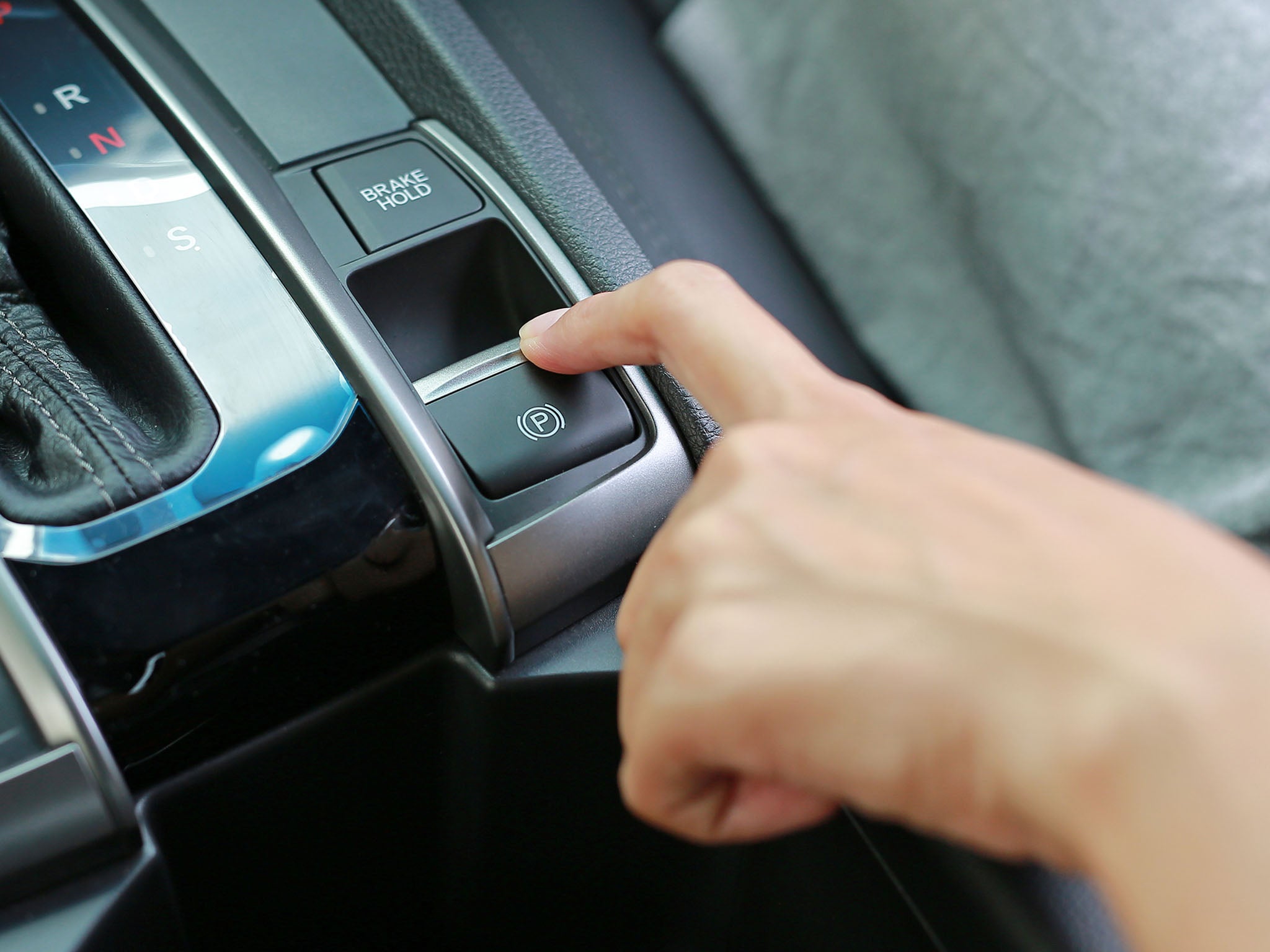‘Grandad, what’s a handbrake turn?’ Why the switch is being flicked on motoring tradition
The sound of metal teeth grinding angrily as the handbrake is applied will soon be a thing of the past, says Sean O’Grady, as manufacturers replace the manual with the automatic

Sadly, for traditionalists, the life of the conventional parking brake is slowly coming to a halt. Actually, not that slowly. Some useful research by CarGurus, a car shopping site, suggests that some 37 per cent of new cars are fitted with the traditional parking brake lever. The data is not weighted by sales, and bigger selling models tend still to be fitted with the cheaper technology; but the trend is certainly clear. Just as everything from air bags to built-in satnav has made its way down the automotive food chain, so too will the electronic parking brake, for good or ill.
As of today, premium makes Audi, Jaguar, Land Rover, Lexus, Mercedes-Benz and Porsche have entirely dispensed with the mechanical parking brake, and many others are following suit, including the mass-market brands. Indeed, only two mainstream manufacturers – Dacia and Suzuki – offer manually operated parking brakes on every model in the range. Otherwise the majority of firms only offer the old-school handbrake part on sportier cars or cheaper superminis.
There is no necessary cause for alarm, however. The traditional manually operated parking brake and the electronic parking brake serve the same purpose of keeping the vehicle stationary. And both have to pass the relevant product standards for volume sales, and an MoT test, as has long been the case. As cars are increasingly also fitted with automatic gearboxes, linked to the handbrake, and automatic “hold” functions for hill-starts, the integration of the so-called handbrake and the other sophisticated control systems makes more sense than attempting to retain the mechanical element under the direct control of the driver – the danger of the mechanical and the electronic systems interfering with each other is plain.
An electronic parking brake is operated via a switch that replaces the traditional mechanical lever. This switch activates a pair of small motors which engage the rear brakes, making a whirring noise as they do so. Until recently considered a luxury and advanced feature, the electronic parking brake requires less physical effort, holds the car more securely and doesn’t need adjusting in the same way as the traditional lever. Most electronic handbrakes disengage automatically when you pull away, plus they often offer an automatic hill-hold assist function, which is an additional safety benefit. The switch helps declutter cabins by taking up less interior space than a chunky lever on the centre console.
However, by the same token, the consequence of an electronic parking brake malfunctioning, whether in sympathy with the other systems or not, could be correspondingly more drastic. A faulty or failing handbrake will usually makes its imminent failure apparent before it eventually snaps; the electronic version may do so more suddenly. If so, then the car could be rendered immobile. Alternatively, if the sequencing of the release mechanism is configured wrongly, especially with a manual gearbox, or if it just goes wrong, a car so fitted could roll forwards or backwards.
The first electronic handbrake on a production car was fitted to the 2002 BMW 7-series limousine, which featured a button on the steering wheel to operate it. Today it can be found on Golfs, Qashqais and Civics, among any other affordable models.
Chris Knapman, editor at CarGurus UK, commented: “It’s official, the death of the handbrake is coming as manufacturers switch to electronic parking brakes in huge numbers. Within the next few years we expect the number of cars on sale with traditional handbrakes to decline further, likely only to be found on a select number of niche models. Of course, the benefits can’t be ignored, but as the latest technology trickles through manufacturer line-ups, many new drivers might never experience one of the most familiar of automotive features. The temptation to attempt flamboyant handbrake turns is soon to be a thing of the past too!”
CarGurus examined the model ranges and specifications of vehicles produced by the following manufacturers: Alfa Romeo, Audi, BMW, Citroen, Dacia, DS, Fiat, Ford, Honda, Hyundai, Infiniti, Jaguar, Jeep, Kia, Land Rover, Lexus, Mazda, Mercedes-Benz, Mini, Mitsubishi, Nissan, Peugeot, Porsche, Renault, Seat Skoda, Subaru, Suzuki, Toyota, Vauxhall, Volvo and VW.
For more information see cargurus.co.uk
Subscribe to Independent Premium to bookmark this article
Want to bookmark your favourite articles and stories to read or reference later? Start your Independent Premium subscription today.

Join our commenting forum
Join thought-provoking conversations, follow other Independent readers and see their replies